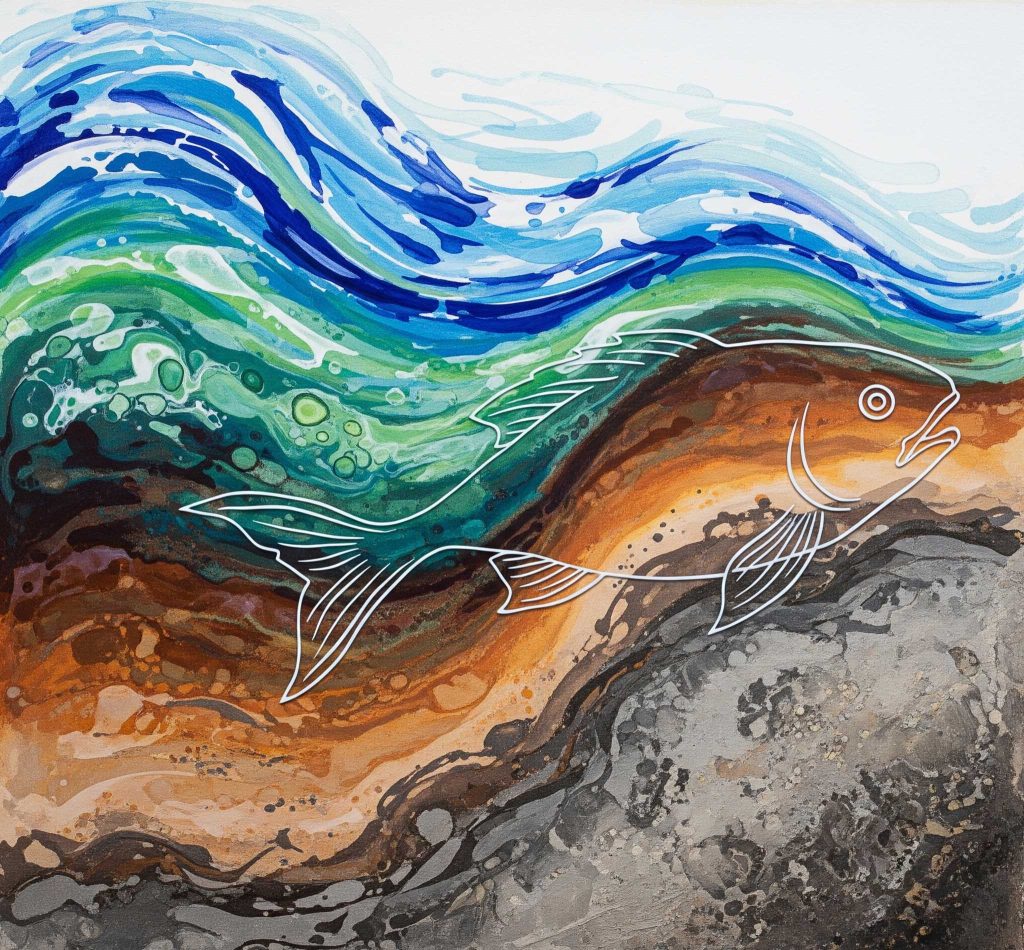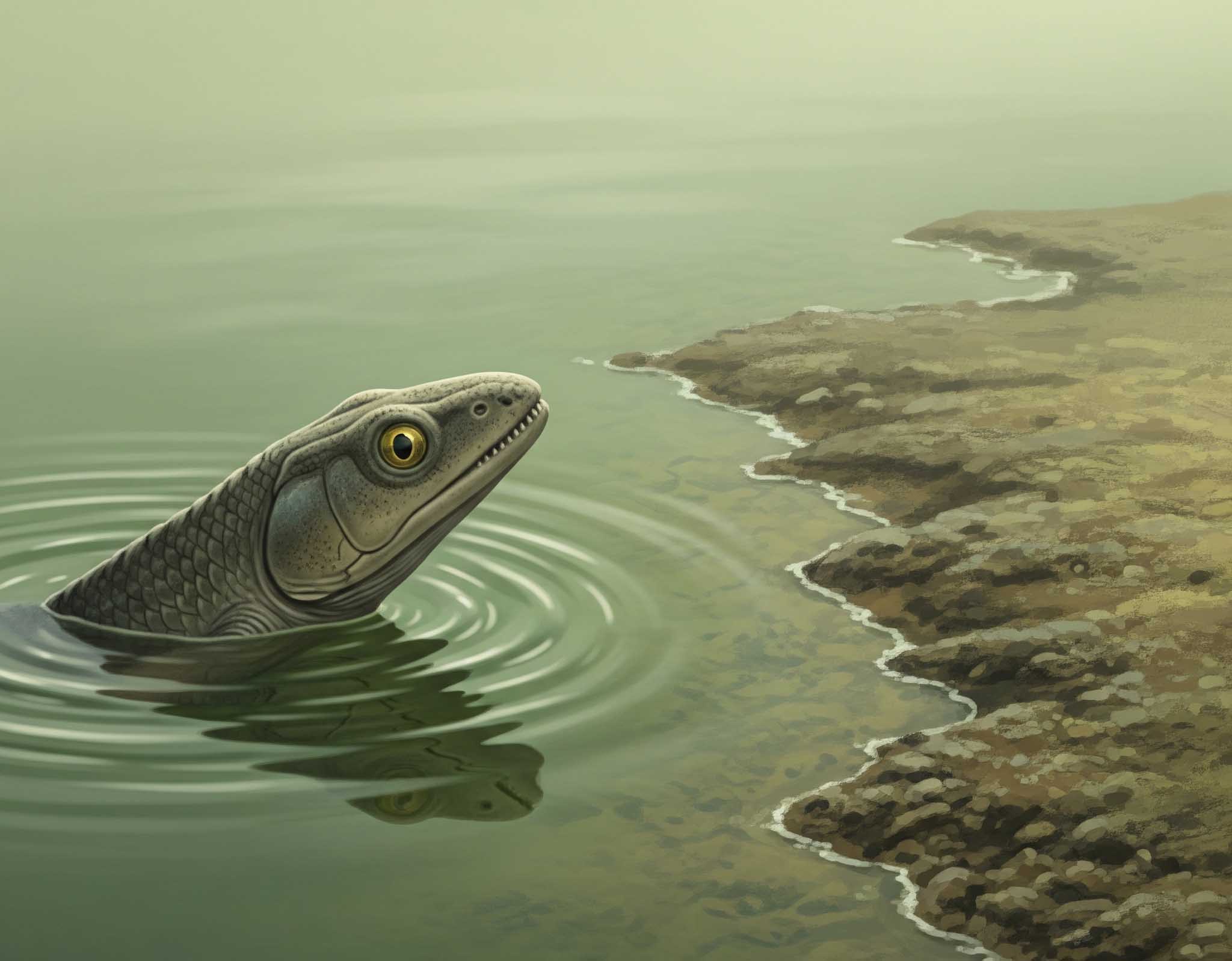Imagine a time, billions of years ago, when all life on Earth lived only in the water. The land was a silent, empty place, just rocks and dirt. No trees, no grass, no animals walking around. It was a huge, empty world, waiting for life to arrive.
The idea of moving from water to land was one of the biggest and most amazing challenges life ever faced. It wasn’t just about learning to walk; it meant changing everything about how an animal lived, breathed, and moved. This is the incredible story of our super-ancient relatives who took those first, brave, wobbly steps onto dry land. It is a story about how animals conquered the land.
Don’t Miss This!
After reading, challenge yourself with our interactive quiz at the end. Click here to take the Quiz
Index

A Fishy Beginning
Our story begins in a time called the Devonian Period, about 375 million years ago. The oceans were bursting with life! There were all sorts of fish, from tiny ones to giant armored monsters. But the competition for food and space was tough.
At this time, there were many shallow, swampy areas with freshwater. For a special group of fish called lobe-finned fishes, these shallow waters were both a problem and a chance. Sometimes, these swamps would dry out, or the water would get very warm and have little oxygen. Fish that could breathe air or move to another puddle had a better chance to survive.
“The leap from water to land was one of the most significant events in the history of life.”
Meet Tiktaalik, the Fish-a-pod!*
The superstar of this amazing story is a creature called Tiktaalik. Scientists found its fossils in 2004, and it was like finding a missing piece of a puzzle! Tiktaalik is a perfect example of an animal that was changing from a fish into something that could live on land. It was a fish, but a very, very special one.
What made Tiktaalik so special?
- A Mobile Neck: Unlike most fish, Tiktaalik had a flat head and a neck that could move! This meant it could lift its head out of the water to look around, or to snap at bugs flying by. Most fish can’t do that; their heads are stuck to their bodies.
- Primitive Lungs: Tiktaalik had both gills (like a fish) and simple lungs. This meant it could breathe air when the water got low on oxygen. It was like having a backup breathing system!
- The First Push-up: This is the coolest part! Tiktaalik’s fins were not like normal fish fins. They were fleshy and strong, with bones inside that were very similar to the bones in our own arms: a shoulder, an elbow, and a wrist. Tiktaalik couldn’t walk on land, but it could do a push-up! It could prop itself up in the shallow water and use its strong fins to push itself along the muddy bottom or even make short trips onto the mudflats.
Imagine a fish doing push-ups! This was a huge step because it meant animals were starting to use their fins not just for swimming, but for supporting their weight and moving on solid ground.
How Bodies Had to Adapt
Moving from water to land wasn’t easy. It meant animals had to change almost everything about their bodies. It wasn’t just about breathing air and doing push-ups. Here are some of the big changes that had to happen:
- Stronger Skeletons: In water, your body floats. On land, gravity pulls you down! Early land animals needed much stronger backbones and sturdy legs to hold up their weight. Think of how much harder it is to walk on land than to swim in a pool.
- New Senses: Seeing and hearing work differently in air than in water. Animals needed new kinds of eyes and ears to make sense of their new world. Their skulls had to change to fit these new sense organs.
- Staying Wet: Animals in water are always wet. On land, they can dry out very quickly. Early land animals needed skin that could keep water inside their bodies.
- Having Babies: This was a huge problem! Most water animals lay eggs in the water. How could land animals have babies without drying out their eggs? The first land animals, like modern frogs, still had to go back to the water to lay their eggs. But later, a super important invention happened: the amniotic egg. This egg was like a tiny, self-contained pond for the baby, with its own food and water supply, protected by a tough shell. This meant animals could finally lay their eggs on land and never have to go back to the water!
From Wobbly Steps to True Land-Walkers
Tiktaalik was just one of many amazing creatures trying to make the move to land. Over millions of years, other animals continued to bridge the gap. Creatures like Acanthostega, which had eight fingers on its paddle-like hands, and Ichthyostega, a more robust, seal-like animal, were some of the first true tetrapods—that’s the scientific name for animals with four limbs.
These early land-walkers weren’t graceful. They probably waddled and dragged themselves more than walked. But they were pioneers! They were exploring a brand new world, full of new food (like insects!) and no big predators (because all the big predators were still stuck in the water).
“The conquest of land was not a single event but a long, messy process driven by the pressures of survival and the opportunities of a new frontier.”
The Story Keeps Growing!
Scientists are always finding new fossils and learning more about this amazing time. For example, recent studies are looking at the tiny bones in the ears of these early land animals. They are trying to figure out exactly when and how animals started to hear sounds in the air, which is very different from hearing sounds in water.
Another exciting area of research is about the tracks and footprints these animals left behind. By studying these ancient footprints, scientists can learn how these creatures moved, how fast they walked, and even how they might have interacted with each other. These tracks can sometimes tell us even more than the bones themselves!
These new findings keep making the story of how life conquered the land even more detailed and exciting. It shows us that there’s always more to learn about our planet’s incredible past.
So, the next time you walk, think about those brave, fish-like creatures from the Devonian Period. You are using a body plan that was forged by them, step by wobbly step, as they dared to leave the water behind and explore a whole new world. It’s a reminder of how amazing evolution can be!
*Fish-a-Pod or Fishapod is an informal term used to describe a group of extinct fish-like creatures that exhibit characteristics of both fish and tetrapods (four-legged animals).
Conquering the Land Quiz
How well do you know the story of the first animals to walk on land?

